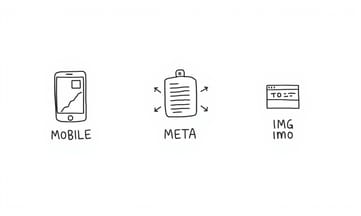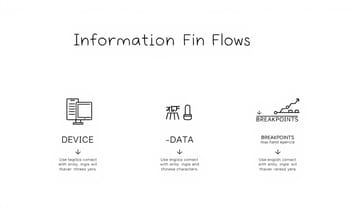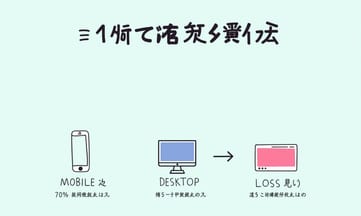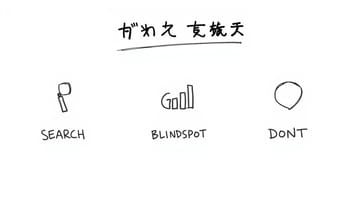快速強化響應式網頁設計 SEO,兼顧行動友善、速度及語意結構,實際提升排名與用戶體驗
- 檢查全站行動適配度,每月用 Google Mobile-Friendly Test 檢測所有重要頁面
持續確保手機端瀏覽順暢,有助搜尋引擎優先收錄並降低跳出率[3][1]
- 壓縮圖片與程式碼,使首頁及主要頁面載入時間維持在3秒內
大幅減少等待,提高SEO分數,也讓流量不輕易流失[2][1]
- 列出每個頁面唯一 Meta 標籤、H1到H3階層標題,避免重複或缺漏
*清楚語意結構*利於搜尋引擎抓取內容主題,不被判為低質或混亂[3]
- *分析 GA 裡近30天各螢幕尺寸占比*,針對超過10%流量的解析度調整RWD斷點設計
*抓住高比例裝置客群*,避免版型跑版導致轉換下降[1]
搜尋引擎重塑—響應式設計與行動優先的浪潮
Google 這幾年已經正式推動 `Mobile-first indexing`,而且在公開文件裡反覆強調。大多數人慢慢也意識到,網站排版能不能適應不同螢幕,其實不只是外觀問題,它直接影響流量來源和排名。這種現象其實並不完全是因為智慧型手機流行,更像是搜尋引擎規則調整下的必然結果。有資料顯示,超過 70% 的使用者流量可能會來自各式行動端裝置,所以對於 SEO 從業人員來說,`Responsive Design`(也就是 RWD)根本無法忽視。
舉例來說,如果桌機、平板還有手機用戶看到的內容版本不同,或者有些區塊跑位、點不到——通常就會讓收錄品質下降,自然排名表現也被拖累。有些站長以前會選擇分開維護 PC 頁面跟 Mobile 頁面,但近幾年證明這樣很容易導致重複內容和維護錯誤;相比之下,直接採用單一響應式框架,加上彈性圖片和流動佈局,大部分情況能更穩定提升曝光度。事實上,要避免這類結構混亂,最關鍵的就是:一開始設計時就同步考慮多平台需求,而不是後面再補救——你不管是哪個產業,好像都愈來愈難躲得掉這股趨勢。
舉例來說,如果桌機、平板還有手機用戶看到的內容版本不同,或者有些區塊跑位、點不到——通常就會讓收錄品質下降,自然排名表現也被拖累。有些站長以前會選擇分開維護 PC 頁面跟 Mobile 頁面,但近幾年證明這樣很容易導致重複內容和維護錯誤;相比之下,直接採用單一響應式框架,加上彈性圖片和流動佈局,大部分情況能更穩定提升曝光度。事實上,要避免這類結構混亂,最關鍵的就是:一開始設計時就同步考慮多平台需求,而不是後面再補救——你不管是哪個產業,好像都愈來愈難躲得掉這股趨勢。
Meta標籤檢查?語意結構那些容易忽略的小事
有時候,`viewport` 這行參數一旦設錯,就會把整個網站的版面都搞亂。剛開始做專案時,其實 RWD 框架都有明確寫好螢幕適應,但後來還是發現手機上標題長度會被截斷、`meta description` 跑位這種問題也不少見。有些人甚至直接複製桌機用的 `meta tag`,結果小螢幕搜尋顯示超奇怪。還有圖片格式只是一味放大,又沒處理 `srcset`,導致載入慢、排版跑掉。
在語意結構上,只要內容區塊順序每次一改,如果 `H1`、`H2` 跳來跳去或互換位置—其實 Google bot 很容易就看不懂重點主題了。簡單講,每測試一次新裝置,都得像例行檢查一樣把 `meta tag`、標題描述長度、圖片自適應跟 H 標階層細細再確認一次。不然只要一個 `viewport` 參數出錯,你優化排名可能就繞遠路了。
在語意結構上,只要內容區塊順序每次一改,如果 `H1`、`H2` 跳來跳去或互換位置—其實 Google bot 很容易就看不懂重點主題了。簡單講,每測試一次新裝置,都得像例行檢查一樣把 `meta tag`、標題描述長度、圖片自適應跟 H 標階層細細再確認一次。不然只要一個 `viewport` 參數出錯,你優化排名可能就繞遠路了。
Comparison Table:
| 結論 | 行動數據流量趨勢 | 響應式設計重要性 | 用戶體驗改善策略 | 常見問題與解決方案 |
|---|---|---|---|---|
| 行動數據流量現在已超過電腦端流量,佔全球用戶訪問的約70%。 | 若網站未做好響應式設計,可能會損失超過一半的潛在客戶。 | 一致性設計和細節優化是確保良好用戶體驗的關鍵。 | 使用圖片壓縮、調整CTA按鈕位置可以顯著提升轉換率。 | 搜索引擎排名不代表實際用戶體驗,需定期檢查行動裝置適用性及載入速度。 |
| 企業必須重視全站結構一致性,以避免邊緣化現象。 | 首頁或導航選單延遲會直接影響回訪率,需優化加速首屏畫面載入時間。 | 對於低權重頁面特別注意,以便及時修正問題並提高可見度。 | 持續交叉比對GA報表和人工巡查能更詳細地捕捉問題所在。 | 過度追求載入速度可能導致功能損失,因此需在效能和功能間找到平衡點。 |
| 品牌網站的基礎建設必須支持多種裝置的穩定呈現以提高曝光率。 | 斷點設定需要根據自家歷史資料進行微調,而非僅依賴市調資料. | 關鍵產品頁面的優化將有助於提升整體流量與轉換率. | 使用CDN來加速網站性能,以及避免繁瑣動畫以降低跳出率. | `Google Search Console` 應每季執行一次,不僅檢查通過測試結果,也要留意收錄異常等細節. |
| 網站內容必須具備語意標記,以提高搜尋引擎理解能力. | 立即壓縮首頁圖像,提高初始載入速度是非常必要的. | `viewport` 標籤缺失將使得搜尋引擎無法正確判讀網頁. | `精細調校多裝置呈現`通常較追求極速載入更有效提升用戶滿意度. | `H1-H6 結構統一` 能幫助清晰傳遞資訊, 提升 SEO 效果. |
| 持續監控並針對不同型號設備進行測試,有助於發現隱藏問題. | `Call-to-action` 元素的位置應該讓訪客容易觸碰, 提高互動機會. | `次級頁面圖片壓縮不理想` 是造成高跳出率的重要原因之一. | `廣告橫幅覆蓋導航列` 將影響使用者尋找資訊的便利性. | `主題頁資源集中投入`, 可實現短期內效果最大化. |

別只動CSS,SEO細節失守後果難以預料
「只有當版面安排得很有條理時,搜尋引擎最佳化才會自動搞定。」這句話在前端圈偶爾會聽到,但現實上,只靠 CSS 微調外觀,其實很難讓搜尋引擎看出網頁主次內容。有些人可能把文章標題做得超級明顯,但其實程式碼裡只用了一個普通的 `p` 標籤,這樣 Google 完全不知道那是重點區塊。還有人網站圖文排版都很整齊,結果完全沒加結構化資料,導致搜尋結果描述亂七八糟、點閱率低落。
反觀有些網站,看起來模板很陽春,但只要 `meta` 標籤、`H-tag` 層級,以及語意標籤都安排妥當,就算外觀不怎麼起眼,自然也能提升排名。換句話說,如果你只顧著微調視覺細節,卻忘了方便機器讀取,有可能曝光流量永遠卡關,感覺總是差臨門一腳。
反觀有些網站,看起來模板很陽春,但只要 `meta` 標籤、`H-tag` 層級,以及語意標籤都安排妥當,就算外觀不怎麼起眼,自然也能提升排名。換句話說,如果你只顧著微調視覺細節,卻忘了方便機器讀取,有可能曝光流量永遠卡關,感覺總是差臨門一腳。
螢幕斷點該怎麼選?GA數據帶路還是經驗法則
近年來,行動裝置的螢幕尺寸變化得滿快,但佔據主流市場的大牌規格其實沒什麼太大變動。某位設計師在社群媒體討論時就提過,與其憑空想像亂切斷點,不如直接打開 `Google Analytics` 這種流量工具,看看到底有哪些裝置真的有上你網站。基本上,目前多數網站桌機加手機的流量合起來差不多就佔了一半左右,其中最常見的大概就是三種尺寸。有些品牌甚至連自家的平板都擠不進前三名。這時候只要針對那些熱門螢幕設定主要斷點,再微調細節,就能涵蓋掉大部分用戶的瀏覽狀況。
不過偶爾還是會遇到一些例外,例如特定族群偏好冷門長寬比或者小眾型號。假如照網路上的模板隨意設 breakpoint,只會讓維護更混亂;所以建議第一步還是先抓住前三個主力尺寸,再結合 `GA` 的來源排名做細緻調整,把每個斷點跟目標受眾的需求貼近一點,這樣比單靠直覺高效率,也比較不容易遺漏到什麼稀奇古怪的情境。
不過偶爾還是會遇到一些例外,例如特定族群偏好冷門長寬比或者小眾型號。假如照網路上的模板隨意設 breakpoint,只會讓維護更混亂;所以建議第一步還是先抓住前三個主力尺寸,再結合 `GA` 的來源排名做細緻調整,把每個斷點跟目標受眾的需求貼近一點,這樣比單靠直覺高效率,也比較不容易遺漏到什麼稀奇古怪的情境。

Mobile-first規則下,載入速度和視覺穩定性兼顧嗎
自從 Google 公布要啟用 Mobile-first Indexing 以來,很多技術論壇就開始熱烈討論響應式設計跟搜尋排名之間的關聯。其實桌機版和行動裝置版的版面配置落差不小,有時只要載入速度慢個三、四秒,頁面的曝光率在 SERP 上很容易就受到影響。再者,最近這波演算法要求網頁還得顧慮互動反應、畫面抖動等細節,不然先前做的內容優化效果可能也會被稀釋掉。有些開發團隊後來才發現,他們原本以為切幾個常見設備尺寸就夠了,但現在連第一張圖片的穩定性都必須納入考量。
根據近期國外 UX 領域的一些案例,大概有將近一半調整過行動友善性的網站,流量表現都有小幅提升;但也出現特殊情況,在不同裝置斷點下某些元件反而變得更錯位。簡單說,技術變革之下,「先做桌機再縮小」這種作法已經難以符合主流標準,而響應式架構幾乎成了支撐多平台不可或缺的一環——當然,每個網站碰到的細節都差異很大。
根據近期國外 UX 領域的一些案例,大概有將近一半調整過行動友善性的網站,流量表現都有小幅提升;但也出現特殊情況,在不同裝置斷點下某些元件反而變得更錯位。簡單說,技術變革之下,「先做桌機再縮小」這種作法已經難以符合主流標準,而響應式架構幾乎成了支撐多平台不可或缺的一環——當然,每個網站碰到的細節都差異很大。
行動流量來襲,不支援RWD就等著跳出率飆升?
「行動數據流量現在遠超過電腦端流量」這句話在各種產業場合常被提及,但其實很少人會認真去探討背後的問題。當一個網頁沒有做好響應式設計時,你會發現只要瀏覽器一打開,按鈕、圖片還有段落不是縮得小到看不清,就是直接溢出螢幕。很多使用者看到這狀況,往往根本沒等內容完全載入就把網頁關掉了。
現在大約有 70% 的全球用戶進站都是靠行動平台。如果網站沒有支援手機介面,通常會在畫面完全顯示前,就已經損失超過一半訪客。有些品牌發現,只要首頁或導航選單稍微延遲一下,回訪率馬上大幅下降,潛在客戶甚至連產品內容是什麼都還沒機會搞懂。不管究竟是設計出了問題還是技術細節被忽略,很難一句話說明白,不過非響應式架構確實正逐步讓企業邊緣化,而這樣的徵兆幾乎每個產業都開始浮現。
現在大約有 70% 的全球用戶進站都是靠行動平台。如果網站沒有支援手機介面,通常會在畫面完全顯示前,就已經損失超過一半訪客。有些品牌發現,只要首頁或導航選單稍微延遲一下,回訪率馬上大幅下降,潛在客戶甚至連產品內容是什麼都還沒機會搞懂。不管究竟是設計出了問題還是技術細節被忽略,很難一句話說明白,不過非響應式架構確實正逐步讓企業邊緣化,而這樣的徵兆幾乎每個產業都開始浮現。

歐美全站一致vs華人首頁美觀,預算有限怎抉擇
最近在歐美市場舉辦的一場產業座談會,直接點明「全站結構一致性」幾乎已經成為品牌網站必修的基本功。有專家補充說,這種細緻到連 `行為追蹤碼`、footer 欄位都要統一規格的做法,其實在中國企業裡還相當罕見。歐美主流觀點強調,就算是 landing page 也不能隨意脫離母版設計;反過來講,中國品牌通常只把預算花在首頁美化或幾個主要入口。
有時候,國際顧問會特別提及,如果只優化首頁,但圖片沒壓縮、語言切換藏在複雜選單裡,以及按鈕被放到偏遠角落——那麼大約有一半的訪客可能還沒等全部載入完畢就失去耐心而離開了。其實,也不是每個新興歐洲品牌都有資源做到極致微調,不過多數至少要求首圖即時壓縮,而且所有 call-to-action 元素都要能直接觸碰,而不是埋進次級頁面。
從營運面來說,有些人會透過 CDN 加速首屏畫面,也有人乾脆砍掉所有動畫轉場,只留下最關鍵的轉換按鈕。不過也有案例顯示,這類策略上線後回訪率並沒有太大提升,所以這些方法只能算是在某些流量結構下有效,而不是萬靈丹。
有時候,國際顧問會特別提及,如果只優化首頁,但圖片沒壓縮、語言切換藏在複雜選單裡,以及按鈕被放到偏遠角落——那麼大約有一半的訪客可能還沒等全部載入完畢就失去耐心而離開了。其實,也不是每個新興歐洲品牌都有資源做到極致微調,不過多數至少要求首圖即時壓縮,而且所有 call-to-action 元素都要能直接觸碰,而不是埋進次級頁面。
從營運面來說,有些人會透過 CDN 加速首屏畫面,也有人乾脆砍掉所有動畫轉場,只留下最關鍵的轉換按鈕。不過也有案例顯示,這類策略上線後回訪率並沒有太大提升,所以這些方法只能算是在某些流量結構下有效,而不是萬靈丹。
轉型響應式後:排名、體驗、轉換率的真實故事
「`Search Console` 全綠燈不代表網站就沒問題。」這句話是在某家 B2B 零組件出口企業的技術研討會上冒出來的,當下氣氛有點尷尬。因為他們網站才剛改版成新的響應式設計,手機版看起來適應得挺順利,搜尋排名短期內還一度大幅提升。結果誰也沒想到,大約兩週後團隊發現:行動裝置用戶流失率其實暴增到接近一半。細查之下才發現,圖片雖然自動縮放,但部分次要頁面壓縮做得不太理想;還有就是有時候導航列會被廣告橫幅蓋住,再加上一些 CTA 按鈕在特定機型上幾乎看不到,都是字體設定惹的禍。
自從那次經驗之後,公司調整了監控方式——除了固定檢查 `Search Console` 的「行動裝置適用性」分數,他們也開始間歇抽查實際索引狀態,尤其針對低權重頁或新上架商品頁更是格外留意。有個專案經理就回憶說:「如果只靠表面測試,很容易忽略一些細節漏洞;其實持續交叉比對 `GA` 報表、人工巡查,以及即時熱區點擊地圖比對,大概才能比較徹底抓出問題。」

三秒生死線—壓縮圖片能救用戶體驗嗎?
2020 之後,大多數新網站基本上都預設採用 mobile-first indexing,這是有管理過跨平台遷移工程師說的。現場有人補充提到,如果平均載入時間卡在約三、四秒以上,流量馬上暴跌,而且跳出率經常衝到將近一半。不過,圖片壓縮如果弄得太頭重腳輕,畫質反而容易糊掉,看起來就很廉價。這種平衡點其實很難拿捏——一旦過度追求精簡設計,砍掉太多功能,有時原本穩定的轉換頁面會突然消失無蹤。
專家建議,不如先針對關鍵產品頁或高流量區塊下手,用工具測試速度,再人工打開測驗。有時只要調整 `CTA` 按鈕的位置或減少不必要動畫,就能讓效能在超過七十種裝置型號間明顯更一致。但在重新設計時,也一定要記得跟原始資料比對,不然優化成效可能會被誤判……
專家建議,不如先針對關鍵產品頁或高流量區塊下手,用工具測試速度,再人工打開測驗。有時只要調整 `CTA` 按鈕的位置或減少不必要動畫,就能讓效能在超過七十種裝置型號間明顯更一致。但在重新設計時,也一定要記得跟原始資料比對,不然優化成效可能會被誤判……
段落資料來源:
通過RWD測試還不夠,多端語意錯漏你檢查了沒
GA 流量的分佈情況看起來像是桌機和行動來源各占將近一半。這種現象其實並不少見。如果網站真的想要在多裝置環境下改善曝光度,有些連結步驟不能掉以輕心:語意標記必須落實到每個子頁,而不是只做首頁;斷點設定也別只靠市調資料,還得根據自家過往紀錄微調。`Google Search Console` 的行動檢查其實建議每季執行一次——不光只是通過測試,細節如收錄異常、斷點混亂還有元件溢出都該比對看看。不只表面的 RWD 測試,跨瀏覽器的顯示狀態也要相互驗證。
部分小型企業剛開始時沒法做到全站優化,可以先把資源集中在高曝光管道跟主題頁,例如著重於圖片壓縮、主要 CTA 按鈕位置以及 H1–H6 結構統一。如果語意結構太混亂或缺少 `viewport` 標籤,搜尋引擎很可能判讀會偏離,加上跳出率也容易升高。專家偶爾方法不同,但某些案例反映:「精細調校多裝置呈現」通常比一味追求極速載入更能提升用戶體驗。
部分小型企業剛開始時沒法做到全站優化,可以先把資源集中在高曝光管道跟主題頁,例如著重於圖片壓縮、主要 CTA 按鈕位置以及 H1–H6 結構統一。如果語意結構太混亂或缺少 `viewport` 標籤,搜尋引擎很可能判讀會偏離,加上跳出率也容易升高。專家偶爾方法不同,但某些案例反映:「精細調校多裝置呈現」通常比一味追求極速載入更能提升用戶體驗。



